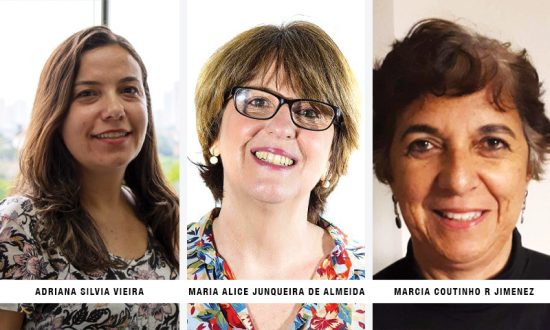Adriana Silvia Vieira is a digital technology coordinator at CENPEC Educação (Centro de Estudos e Pesquisas em Educação, Cultura e Ação Comunitária). She graduated in Letters (Portuguese and Spanish languages) at the University of São Paulo (USP), specialized in technological management and education at the Universidad Autónoma de Madrid and has a master’s degree in “Language in new contexts” from the Federal University of São Paulo (Unifesp). She has worked as a Portuguese teacher and has coordinated projects in Technology and Education.
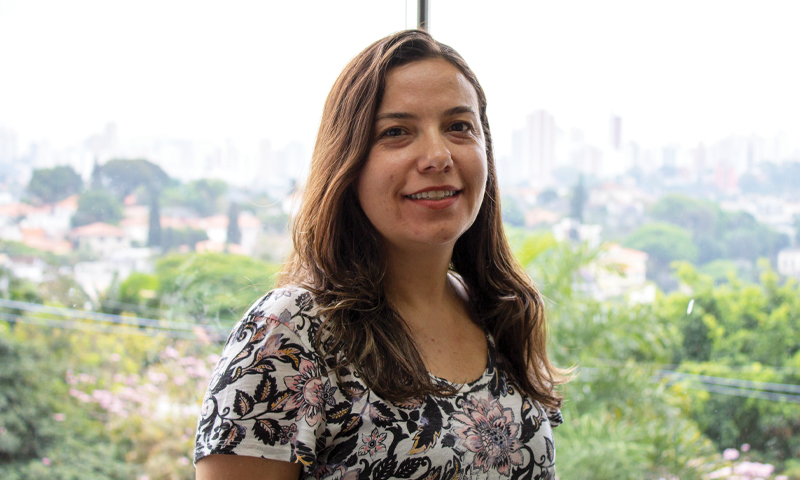
Marcia Coutinho works at CENPEC as Projects Communication Coordinator. Directed institutional, educational and documentary videos. She is one of the authors of the book Techno-educational innovation by OEI Brasil, 2011. Master and researcher at School of Communication and Arts at the University of São Paulo, she works with digital literacy for teachers.
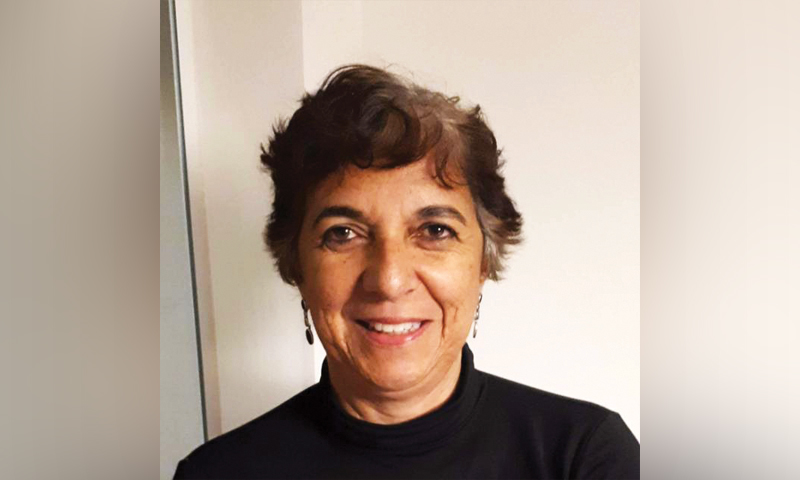
Maria Alice Junqueira de Almeida is a coordinator of literacy projects at CENPEC Educação (Centro de Estudos e Pesquisas em Educação, Cultura e Ação Comunitária). She graduated in Psychology at the Pontifical Catholic University of São Paulo (PUC), and specialized in “Literacy, relations between teaching and learning” at the Instituto Superior de Educação Vera Cruz. She worked as a teacher in Pre-k and Elementary Schools for more than a decade and has worked with teacher training in public and private school systems ever since. She has vast experience in pedagogical counselling and teaching material development.
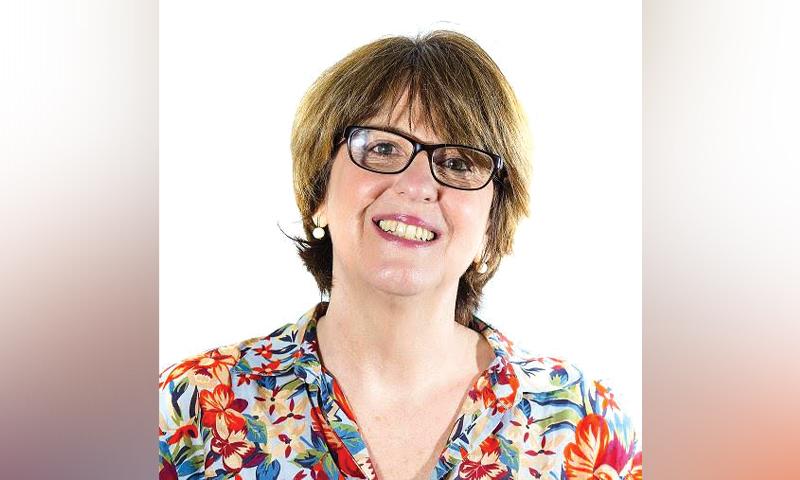
The social distancing measures taken as a result of the coronavirus pandemic led to the closing of schools in almost every corner of the world, including Brazil, where they have exacerbated the country’s historical social and educational inequities. In São Paulo, the largest city in Brazil, as well as in other cities and states, public schools started providing remote activities for their students, including for those just learning how to read and write. The development and delivery of activities by schools and their completion by students outside the school setting brought about disruption to traditional teaching and learning processes and laid the ground for carrying out experiments and pedagogical practices unthinkable prior to the pandemic.
This article will address one such experiment that used smartphones, namely the WhatsApp application, conducted by a group of women educators to teach vulnerable children how to read and write.
Access and Connectivity in Brazil
Brazil is characterized by many inequities when it comes to access to digital technologies. According to a 2019 ITCDomicilio survey conducted by the Brazilian Internet Steering Committee (CGI.br), 20 million Brazilian households do not have internet, a reality which especially affects families with income of up to one minimum wage salary (45%). Cell phones are the main devices used for connectivity: 58% of Brazilians connect to the internet exclusively through their smartphones, a share that reaches 85% in the poorest classes and among the black (65%) and mixed-race (61%) populations. In addition to the trouble the population has with connecting to the internet, the lack of teacher training has been pointed out as one of the main roadblocks for incorporating ITCs (Information and Communication Technologies) in education. The 2019 ITC Educação survey, also conducted by CGI.br, found that for 53% of teachers (who teach in urban schools) the absence
of specific courses on how to use the internet makes their work with students really difficult, and for another 26%, it makes it a little difficult. In other words, 79% feel that it makes things difficult to a certain degree. Additionally, studies on teachers’ incorporation of ITCs often make the assumption that this process requires a learning curve whose arc is gradual and takes place in stages. When considering that teachers could be in different phases of incorporating technologies into their practices, it often becomes necessary to undergo a checklist to ascertain what point the teachers are at in order to organize training opportunities that help them to make progress in their training. According to UNESCO (2009), organizing standards or integrating technology into pedagogical practices can provide guidelines that help in building teacher training programs that will provide the teaching staff with skills.
Change in education requires that the teacher’s training must promote the use of ITCs as part of the curriculum and pedagogical practices, thereby “supporting the student’s cognitive development and making it possible to attribute new meanings to the teaching and learning process so that it becomes more active, significant, contextual and closer to contemporary social practices” (CENPEC; CIEB, 2019, p. 9). Teachers’ adoption of technology can be broken down
into five stages ranging from exposure to ITCs to the transformative use thereof as shown in Table 1. One of the major challenges that teachers mentioned in relation to emergency remote education is the “lack of knowledge about adapting classes to a new format,” and the most commonly used tool adopted by public schools for remote education during the pandemic has been WhatsApp.
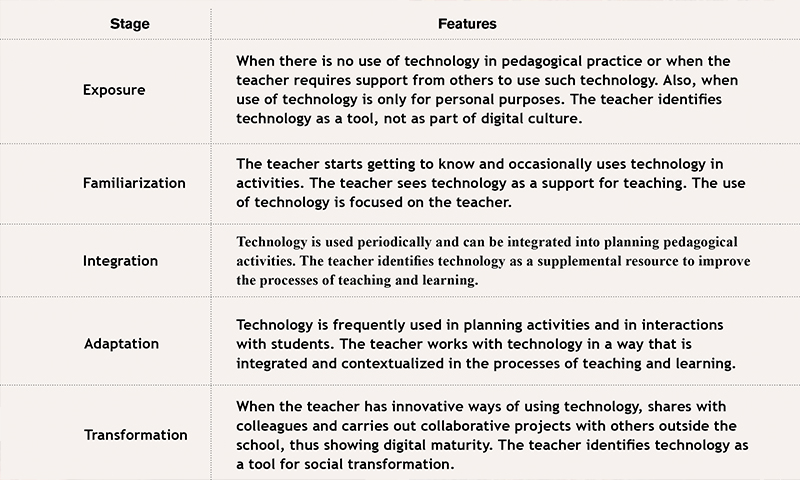
Additionally, another research study developed by CGI.br, ITC KIDS Online Brazil 2019, found that 54% of children between the ages of 9 and 10 stated that they have already engaged in communication by sending instant messages, thus confirming that children know about this software. In this context, the WhatsApp instant communication technology was identified as a helpful medium to support learning outside the classroom and as a catalyst for reducing inequality. Some projects have already used cell phones for teaching students how to read and write with the objective of minimizing educational interruptions in post-conflict and post-disaster zones, thus helping “to ensure the continuity of education in times of crisis.” Therefore, such technology have been shown to be an excellent channel for spreading educational opportunities to students who do not have access to schools during this time, and even act as a bridge between formal and informal learning, as will be shown below.
The Experiment of Using WhatsApp for Teaching Literacy in Remote Education
Promoting literacy is to guarantee mastery of skills considered to be indispensable for full entry into learned society. It is also the school’s role to understand literacy in a broader sense, considering the multiple languages (verbal text, still and moving images, sounds, figures, diagrams, etc.) that make up contemporary texts, many of which circulate digitally. “Schools also need to prepare students for digital literacy along with additional skills and ways of thinking which used to be foreseen for print text.” (COSCARELLI, 2016, p. 17) Add to the complex tasks required for reading print the technical skills to, for example, use a mouse, download apps on a smartphone or hold a video call, as well as building relationships, projections and very fast inferences in multimedia events. Additionally, the interactivity of the digital space also involves developing values, rules and sensitivity related to participation and collaboration online, which some authors have called a new ethos in digital literacy.
However, full literacy is far from a universal reality, especially for lower income classes whose access and longevity in the school system were already weak in before COVID-19, which unfortunately seems to have been exacerbated even more with the arrival of the pandemic. In Brazil, the results of external federal assessments reveal that the writing and reading proficiency levels of a large number of students are at elementary levels. According to the 2016 National Literacy Assessment, which takes a census approach to study the performance of students in the third grade of primary education in all of Brazil, the majority of students (54.7%) were classified as having reading levels considered to be insufficient and 34% of them showed insufficient writing levels. Such data reveal how urgent investment in literacy already was before the pandemic so that children and young people could develop the reading and writing proficiency necessary to understand their civic rights and duties. The challenges that lower-income classes face when it comes to access to remote education, social inequalities tend to deepen and be further exacerbated. How do we maintain the literacy process for children in remote education when there are so many challenges? How to incorporate digital technologies favoring the learning and teaching process? Based on the pedagogical use of smartphones for literacy processes in remote education, CENPEC experiments in partnership with the Tide Setubal Foundation point out new ways of teaching and learning have made it possible to sustain students’ connection with education, even if it is in the context of many challenges for access and connectivity to the internet. With the need for social distancing and the consequent closure of schools in March 2020, these two institutions embarked on the development of a remote project for supporting the literacy skills of children in socially vulnerable situations.
The children served by the project are six years old and had just entered the first grade of primary education. They study and live in the Eastern Zone of São Paulo, in a neighbourhood with a series of socioeconomic disadvantages in relation to other neighbourhoods in the city. The project serves 11 children and is led by a group of nine volunteer women educators who have quite a lot of experience both in literacy skills and teacher training. The smartphone is the only device most of these families have for connecting to the internet and they do so with a rather limited data plan. Therefore, WhatsApp was the tool chosen for carrying out the project. Twice per week the teachers held videocalls on their smartphone, during which they worked directly with the children in interactions of no more than one hour. During the videocalls, the mother or other adult responsible for the child is always present to understand the activity and help to integrate it into his or her routine with the child.
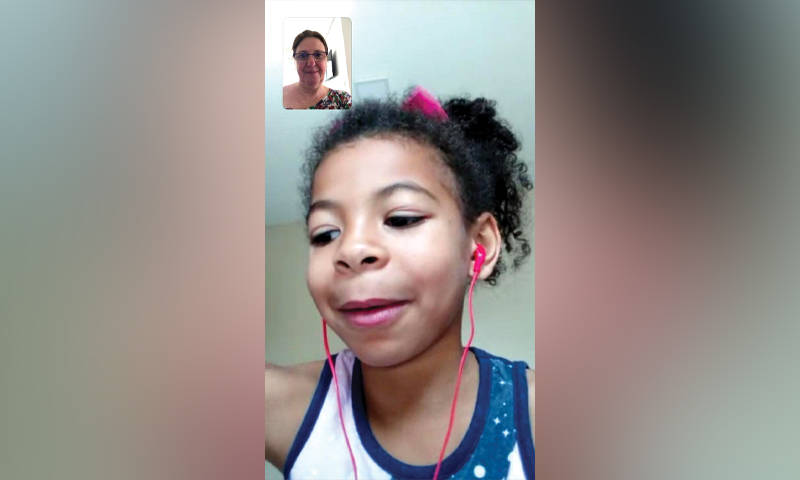
Since the project coordinators were aware of the fact that the project entailed entering the children’s homes via the videocalls, the group took some careful measures from the very beginning of the project out of respect for the families’ privacy. These measures included: scheduling class times according to the routine in the children’s homes, always confirm the class the evening before via a text message, being respectful regarding the family dynamics—which the educator would often experience during the class— among other sensitive issues taken into consideration.
The meetings always follow the same ritual in each videocall. They start with the educator reading aloud, followed by writing activities with a mobile alphabet (cut-outs of the letters of the alphabet); games related to the tongue and language, such as word games or tongue twisters, rhyming songs and riddles. There are also times when the child reverses roles with the reader, thus using books from the neighbourhood library and tells the teacher the story based on the illustrations. The project has provided new learning for the group of educators who are very experienced in teaching students how to read and write, but have little practice in the pedagogical use of digital resources and have been able to dedicate themselves to thinking about technology-aided teaching. A good example of this is the situations where they read aloud at the beginning of the project that needed to be reinvented. Introducing a book in person is quite different from doing so via a smartphone. The group developed strategies that made it possible to achieve the learning objectives without having to diminish the quality of these literacy events. Holding the book in an L to make it easier to show the entire page was one such strategy; bringing the mobile device’s camera closer to some images to show important aspects for understanding the narrative was another.
The children, on the other hand, also developed procedures that helped them build the meaning of the text. Conversations such as the one quoted below have been described by the group of educators: “Ms. Teacher, could you show me that figure again because I want to see something? No Ms. Teacher, not the one you are showing right now, the other one, that you showed us just before.” Gradually the conversations became more interactive and the children started to point at the images on the screen, “It’s this one here, do you see it Ms.Teacher?” Likewise, the educators started to answer while pointing at the screen, “Which one? This picture here, or that one over there?” This way the teachers and the children have been discovering together what the best way of using the smartphone is during the reading times and are building strategies that
drive learning.
In the writing activities involving the mobile alphabet, it is fundamental that the educator follows the child’s entire movement: the search for a letter to write a certain word, hesitations, switching one letter for another, the way of reading what was written—following the child’s reading along with a finger—among other important gestures in the process of learning how to read and write, since they give clues about the child’s logical reasoning. Therefore, the adult who watches over the child has been asked to hold the smartphone and capture all these situations. Thus, it was necessary to teach the families how to aim the camera, keep their hands steady, not aim the camera toward the light, etc. The students, in turn, were learning the same procedures together with the guardians, and, thus, gaining greater autonomy in the use of the smartphone. Mastery of these procedures started to make a major difference and to help both with teaching and learning. New discoveries such as recording voice messages, turn them into text and send them were also performed by the students, which led the educators to think about how to make the most of this resource. The idea is to ask the student to write out a word (within the student’s concept of writing) and then go in the opposite direction, thus turning the text into an audio message. Consequently, the student who still has not achieved alphabetic writing can compare what they had intended to write with what they actually did and then, through the teacher’s help, think about it and move on. Finally, it is possible to see that in the activities where the children read to their teachers the appropriation of the smartphone helps learning how to read in this context. The way that they position the book before the camera of the mobile device and ask, “Can you see properly, Ms. Teacher?”They point at the names of the author, illustrator and publisher on the cover of the book, point out details about a certain image by bringing the mobile device closer so that what they want to show will be visible, and finish the reading saying, “And they all lived happily ever after,” just as the teachers tend to say.
The potential of interaction made possible by the smartphone-assisted pedagogical practice is another important aspect worth pointing out. Although none of the 11 children ever met in person with their teachers, the affective bond between the two became increasingly tighter. This also happened in families, which started to share the development of their children with volunteer educators, talking about different things and working as hard as possible not to miss a single meeting. There was even a situation in which two families who needed to go back to their home states due to losing a job as a result of the pandemic and picked up the remote classes as soon as they were settled into their new hometowns. This is how the project also included students from other states in Brazil (Bahia and Piauí). It ought to be stated that although the educators use WhatsApp for personal purposes, none of the educators had ever learned to read and write through this technology, much less considered it as a potential aid for teaching language or as a supplementary tool for improving the teaching and learning process. In other words, the educators would not even be in the “adaptation” stage, according to the levels of digital technology adoption set out for training teachers for its pedagogical use. However, the complexity of the context and the joint discovery among the educators (in their weekly meetings) and between educators and students in classes about the potentials and limitations of WhatsApp provided a sense of the challenges that were overcome in a participative and collaborative way. This engagement created a new dynamic in the teaching and learning process and signalled a step up in terms of the stages of adopting technology, as well as an active immersion in digital culture, both for the students and
the teachers.
Upon entering the students’ homes through the videocalls, the teachers were opening themselves up to experiencing new ways of creating bonds, of interacting and teaching; and the students and their families delved into the new challenges of learning through a screen, in addition to establishing bonds with the educators whom they had never met before. These new educational practices created in the context of the pandemic could signal a transformative use of this technology.
Final Considerations
The mobile literacy project in remote education shows the importance of thinking about the policies for training teachers in the use of ITCs as a dynamic rather than linear or sequential process in which the stages of adopting technology require being in sync with the complexity of the context, such as emergency remote teaching. In this sense, appropriating technology ought to surpass the instrumental use of technology, the technique by technique, and appreciate human participation therein, thus providing collaborative work (among teachers and between teachers and students) so that the jointly-created teaching strategies could involve the students and meet their needs, and that these have prominence in their learning activities. The literacy teachers’ experiments also demonstrated the understanding of how digital technologies change the practices of reading and writing and demand new dynamics in educational work, considering the multiple languages and the participatory and collaborative ethos that characterize digital culture.
The educational paths for teaching and learning with (and through) ITCs need to identify digital technology as resources for social transformation, thus enabling innovation in pedagogical practices with the purpose of preparing students—and teachers, too, in their early and continued education—to act effectively with autonomy and criticality in contemporary society. The experiment presented in this article shows that the pandemic can favour innovative educational practices, as it can also exacerbate educational inequalities for those without access to remote learning. It is urgent that the public policies for offering quality education in Brazil contemplate including digital literacy as a right, and the pandemic has only stressed this fact.




